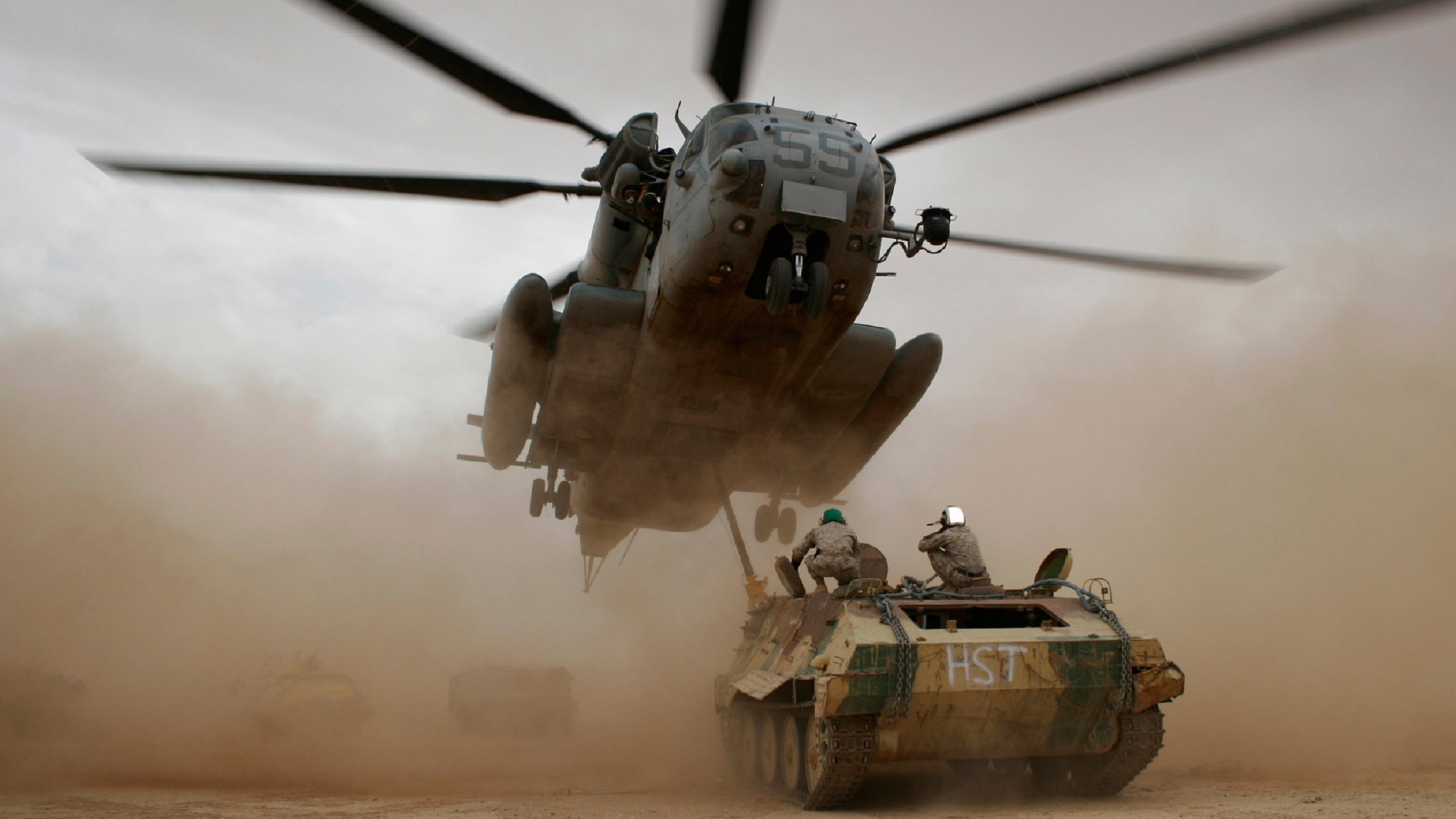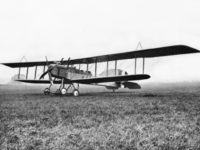The Short Bomber was a British two-seater long-range aircraft which was used as a bomber and for torpedo attacks and was developed from the successful Short Type 184.
Development and design:
The Short Bomber was built from a mixture of the aircraft Short 184 and 166. The fuselage of the two aircraft types was put together and the wings of the 166 were taken over.
The box-shaped fuselage was put again on the lower wing and provided with a continuous cockpit. With the first prototypes the observer sat still in the front seat around the machine gun attached on the upper wing to serve. With the development of the ring attachment, the machine gun was moved to the rear of the cockpit and the pilot now sat on the front seat.
Various Rolls-Royce Eagle and Sunbeam engines were used for propulsion.
Since the airplanes should be used predominantly as bombers, mountings for bombs were attached under the lower wing with which the airplane should carry up to 420 kilograms of bombs. After the first test flights, however, it turned out that the performance of the aircraft was not designed for such loads, so the wingspan had to be increased. After the first modification the prototypes flew much more unstable than before. The fuselage was lengthened by 1,35 meters to eliminate this problem as well. Only after the second modification could the aircraft carry the required bomb load and fly relatively quietly.
Some of the short bombers were to be used in the British Navy for torpedo attacks. For this a device was attached to the hull instead of the bomb holders with which a 14 inch Whitehead Torpedo could be taken up.
In 1916 the company finally received the order for the production of 83 short bombers, which were delivered from the beginning of November 1916.
Use in the First World War:
In mid-1916 the 7th squadron of the Royal Naval Air Service was equipped with the first Short Bomber aircraft. In the night from 15 to 16 November, the first attack was flown on the Belgian city of Ostend and its port, where the base of the German submarines was located at that time.
During the winter from 1916 to 1917 further bomb attacks were flown, but it quickly became apparent that the Short Bombers were too weak in performance to be used effectively.
Until April 1917, these were finally replaced by the more powerful Handley Page Type O / 100 aircraft and withdrawn from the front. The last attack of the Short Bombers took place in the four nights before 23 April 1917 on the Zeebrugge Mole in preparation for the large fleet attack of the British.
Technical data:
| Designation: | Short Bomber |
| Country: | Great Britain |
| Type: | Torpedo Bombers, Bombers |
| Length: | 13,72 meters |
| Span: | 25,61 meters |
| Height: | 4,57 meters |
| Weight: | 2.273 kg empty |
| Crew: | Max. 2 |
| Engine: | A Rolls-Royce Eagle water-cooled V12 engine with 250 hp (187 kW)
In some airplanes Sunbeam engines too |
| Maximum speed: | 124 km/h |
| Range: | Max. 6 hours |
| Arming: | 1 x 7,7 mm Lewis machine gun, a 14 inch torpedo or up to 420 kg bombs |
You can find the right literature here:
The First Air War, 1914-1918
In this concise study, Kennett tells the complete story of World War I's air battles, from Eastern to Western front, from the skies of Europe and its seas to those of the Middle East and Africa.
Aircraft of World War I 1914-1918 (Essential Identification Guide)
Illustrated with detailed artworks of combat aircraft and their markings, Aircraft of World War I: The Essential Aircraft Identification Guide is a comprehensive study of the aircraft that fought in the Great War of 1914–18. Arranged chronologically by theatre of war and campaign, this book offers a complete organizational breakdown of the units on all the fronts, including the Eastern and Italian Fronts. Each campaign includes a compact history of the role and impact of aircraft on the course of the conflict, as well as orders of battle, lists of commanders and campaign aces such as Manfred von Richtofen, Eddie Rickenbacker, Albert Ball and many more. Every type of aircraft is featured, including the numerous variations and types of well- known models, such as the Fokker Dr.I, the Sopwith Camel and the SPAD SVII, through to lesser-known aircraft, such as the Rumpler C.1, and the Amstrong Whitworth FK8. Each aircraft profile is accompanied by exhaustive specifications, as well as details of individual and unit markings. Packed with more than 200 color profiles of every major type of combat aircraft from the era, Aircraft of World War I 1914–1918 is an essential reference guide for modellers, military historians and aircraft enthusiasts.
World War One Aircraft Carrier Pioneer: The Story and Diaries of Captain JM McCleery RNAS/RAF

World War One Aircraft Carrier Pioneer: The Story and Diaries of Captain JM McCleery RNAS/RAF Hardcover – June 13, 2011
Jack McCleery was born in Belfast in 1898, the son of a mill owning family. He joined the RNAS in 1916 as a Probationary Flight Officer. During the next ten months he completed his training at Crystal Palace, Eastchurch, Cranwell, Frieston, Calshot and Isle of Grain, flying more than a dozen landplanes, seaplanes and flying boats, gaining his wings as a Flight Sub-Lieutenant. In July 1917 he was posted to the newly commissioning aircraft carrier HMS Furious, which would be based at Scapa Flow and Rosyth. He served in this ship until February 1919, flying Short 184 seaplanes and then Sopwith 1½ Strutters off the deck. He also flew a large number of other types during this time from shore stations at Turnhouse, East Fortune and Donibristle.
He served with important and well-known naval airmen including Dunning, Rutland (of Jutland) and Bell Davies VC. He witnessed Dunning’s first successful landing on a carrier flying a Sopwith Pup in 1917 and his tragic death a few days later. He also witnessed the Tondern raid in 1918, the world’s first carrier strike mission. He took part in more than a dozen sweeps into the North Sea by elements of the Grand Fleet and Battle Cruiser Fleet. He carried out reconnaissance missions off the coast of Denmark, landing in the sea to be picked up by waiting destroyers. He witnessed the surrender of the High Seas Fleet. Promoted to Captain, he acted as temporary CO of F Squadron for a time postwar.
A World War 1 Adventure: The Life and Times of RNAS Bomber Pilot Donald E. Harkness

A World War 1 Adventure: The Life and Times of RNAS Bomber Pilot Donald E. Harkness Paperback – June 25, 2014
A deeply personal and revealing eyewitness narrative of one airman's life as a bomber pilot in England 's RNAS (Royal Naval Air Service) in WWI. It is a true story, an adventure, and a war memoir carefully constructed from Captain Donald E. Harkness's unpublished diaries, letters, sketches and photographs - only recently uncovered nearly a century later - that documented his remarkable experiences and military adventures over England, France and Belgium. The first book written by a highly decorated WWI flyer from New Zealand that captures the "behind the scenes" life of RNAS pilots, as well as the surprises, terrors, traumas, humor, and sheer excitement of an aerial form of combat never before experienced by anyone, anywhere - and only eleven short years after the Wright Brothers historic flight at Kitty Hawk. With a talent for writing, Don begins an epic journey at a major turning point in history when the world is poised at the dawn of flight, and bracing itself for unknown dangers of unprecedented sophistication and savagery. Don's journal reveals unique insights and vivid imagery of another time and experience, to wit: - the terror and devastation of a Zeppelin bombing raid in London - the training regimen of early flying schools, and their serious & comic episodes - the wonder, awe, and poetry of flying aloft in the majestic heavens - vivid bombing raids, plus the raid that earned him the DSC - his crash-landing and capture - working with the underground to help downed pilots evade capture - London's unrestrained exuberance on Armistice Day; . . . and much, much more.
This post is also available in:
 Deutsch (German)
Deutsch (German)  Français (French)
Français (French)  Italiano (Italian)
Italiano (Italian)  简体中文 (Chinese (Simplified))
简体中文 (Chinese (Simplified))  Русский (Russian)
Русский (Russian)  Español (Spanish)
Español (Spanish)  العربية (Arabic)
العربية (Arabic)














